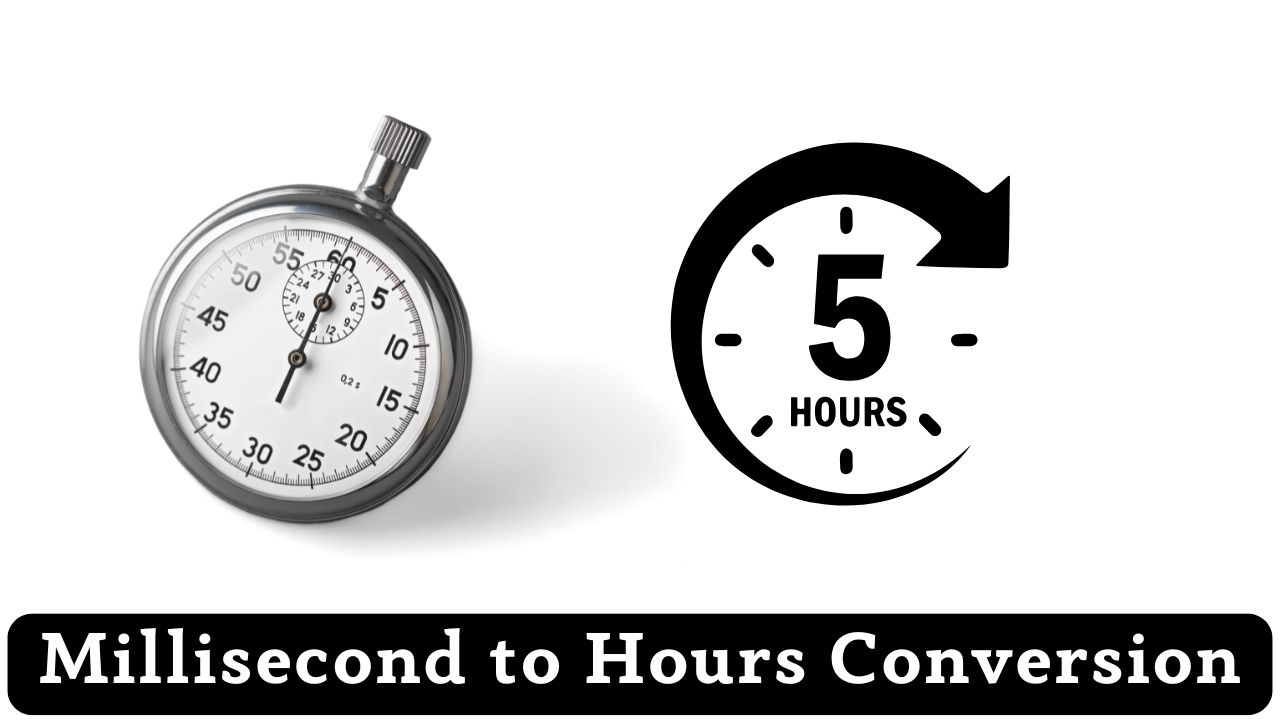Milliseconds to Hours Calculator
Precise time conversion with detailed breakdowns, quick presets, and educational insights

How Many Milliseconds in Hours
There are exactly 3,600,000 milliseconds in one hour. Converting between milliseconds and hours requires understanding that 1 hour = 60 minutes = 3,600 seconds = 3,600,000 milliseconds. This conversion is essential for timing calculations, programming applications, and precise time measurement in various technical and scientific contexts.
The Conversion Formula
Hours = Milliseconds ÷ 3,600,000
Milliseconds = Hours × 3,600,000
The calculation is based on: 1 hour = 60 minutes × 60 seconds × 1000 milliseconds = 3,600,000 milliseconds.
Example: 2 hours × 3,600,000 = 7,200,000 milliseconds, or 10,800,000 milliseconds ÷ 3,600,000 = 3 hours
Understanding Milliseconds & Hours
Time unit breakdown:
1 Millisecond: 0.001 seconds = 1/1000 second
1 Hour: 60 minutes = 3,600 seconds = 3,600,000 milliseconds
Applications: Performance monitoring, timeout settings, animation timing, server response measurement
Hours provide practical time units for scheduling and planning, while milliseconds offer precision for real-time applications and performance analysis
Quick Reference Table: Milliseconds to Hours
| Milliseconds | Hours | Minutes | Common Usage |
|---|---|---|---|
| 1,000 | 0.000278 | 0.0167 | One second |
| 60,000 | 0.0167 | 1.000 | One minute |
| 3,600,000 | 1.000 | 60.000 | One hour |
| 7,200,000 | 2.000 | 120.000 | Two hours |
| 28,800,000 | 8.000 | 480.000 | Work day (8 hours) |
| 86,400,000 | 24.000 | 1,440.000 | One day |
Frequently Asked Questions
How do you convert milliseconds to hours?
To convert milliseconds to hours, divide the number of milliseconds by 3,600,000. For example: 7,200,000 milliseconds ÷ 3,600,000 = 2 hours. This works because there are exactly 3,600,000 milliseconds in one hour.
Why are there 3,600,000 milliseconds in an hour?
An hour contains 60 minutes × 60 seconds × 1000 milliseconds = 3,600,000 milliseconds. This calculation follows the standard time conversion chain from hours down to the smallest unit of milliseconds.
When would you need milliseconds-to-hours conversion?
This conversion is useful in programming for performance analysis, timeout calculations, animation duration settings, server monitoring, data processing pipelines, and any application requiring precise timing over hourly periods.
Is the milliseconds-to-hours conversion always accurate?
Yes, the conversion is mathematically precise because both milliseconds and hours are fixed time units. Unlike calendar calculations that might involve leap seconds, the relationship between milliseconds and hours remains constant at exactly 3,600,000:1.
What programming contexts use millisecond-to-hour conversion?
Common use cases include performance monitoring dashboards, API timeout settings, animation timing controls, scheduled task intervals, cache expiration times, and real-time analytics where hourly aggregations are needed.
How do you handle fractional hours in milliseconds?
For fractional hours, multiply by 3,600,000 and use the remainder for precise calculations. For example, 1.5 hours = 5,400,000 milliseconds, allowing for exact timing in applications requiring sub-hour precision.
Programming & Technical Applications
Performance Monitoring: Converting millisecond response times to hourly performance metrics helps identify patterns, peak usage periods, and system bottlenecks over time, enabling better capacity planning and optimization strategies.
Animation & Media: Web animations, video processing, and multimedia applications often work with millisecond precision but need to display duration in user-friendly hours for progress indicators, time remaining calculations, and scheduling interfaces.
Server & Network Timing: Network monitoring tools, server uptime calculations, and distributed system timing frequently require converting between millisecond measurements and hourly reporting for operational dashboards and SLA monitoring.
Pro tip: When building time-sensitive applications, use millisecond precision for calculations but convert to hours for user interfaces to balance technical accuracy with human readability and understanding.
